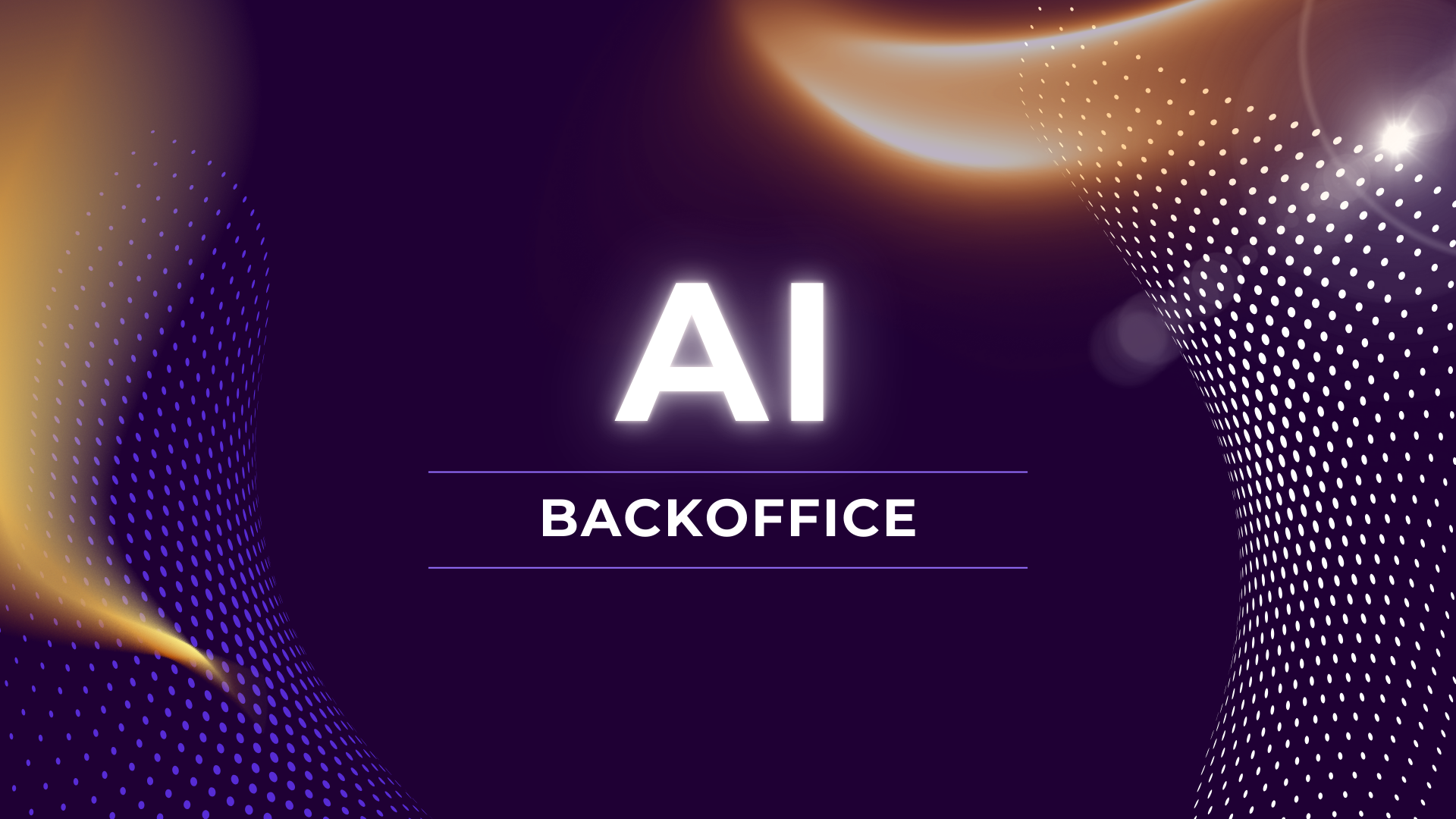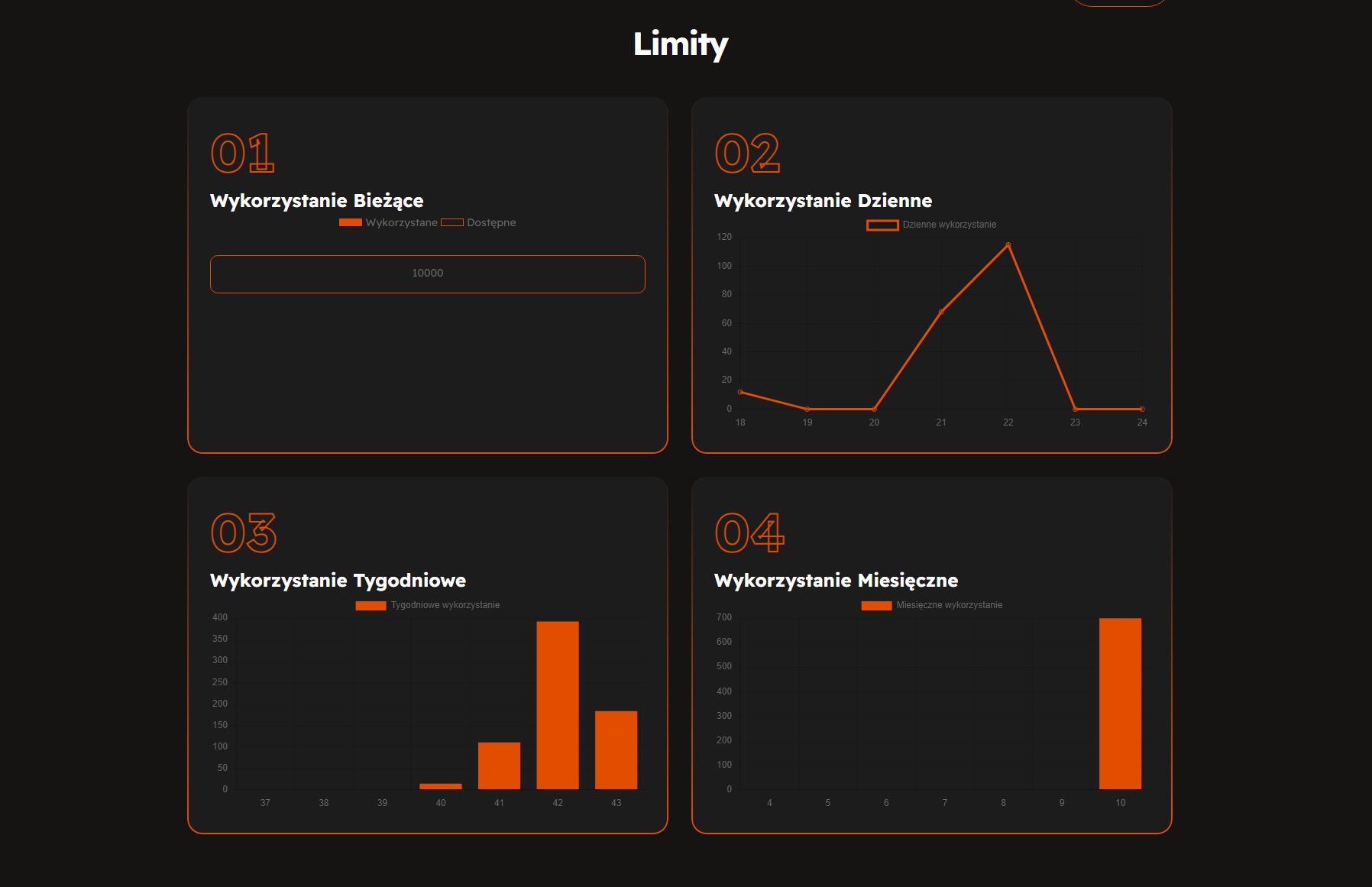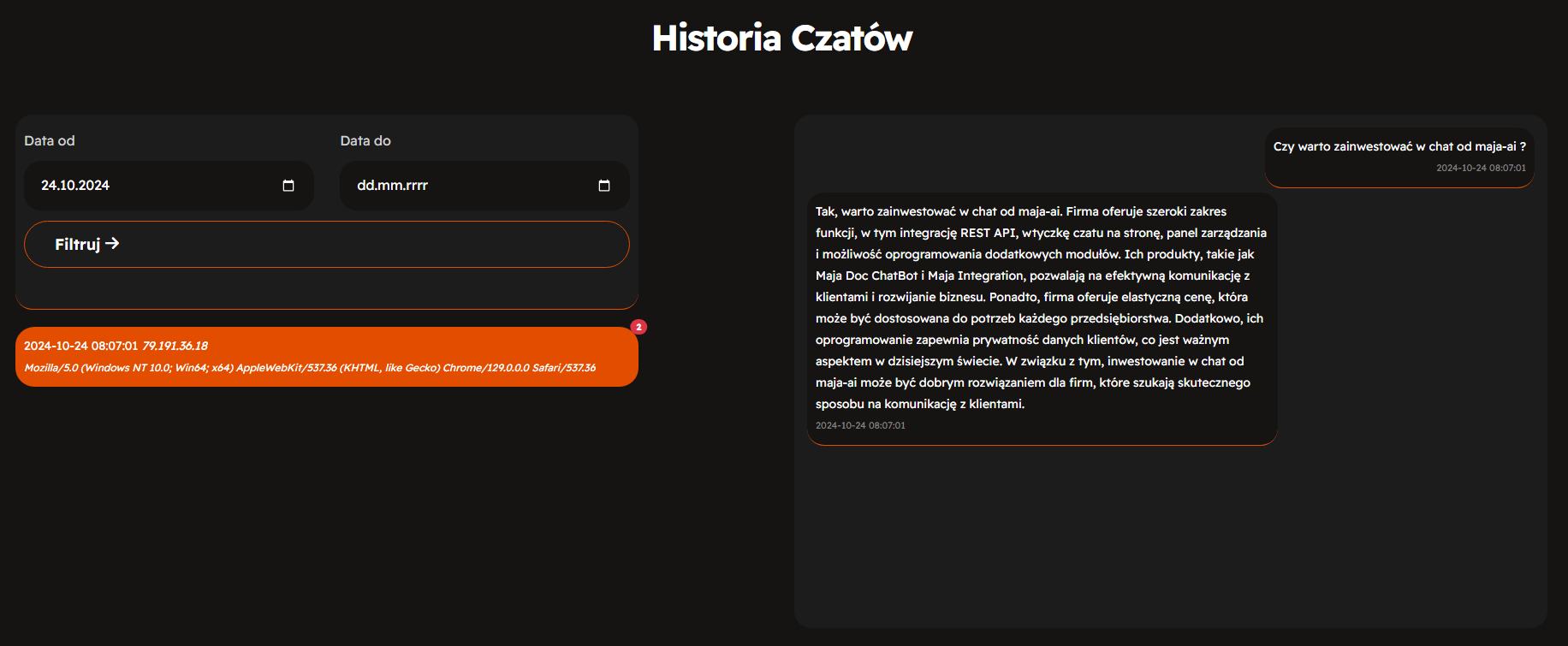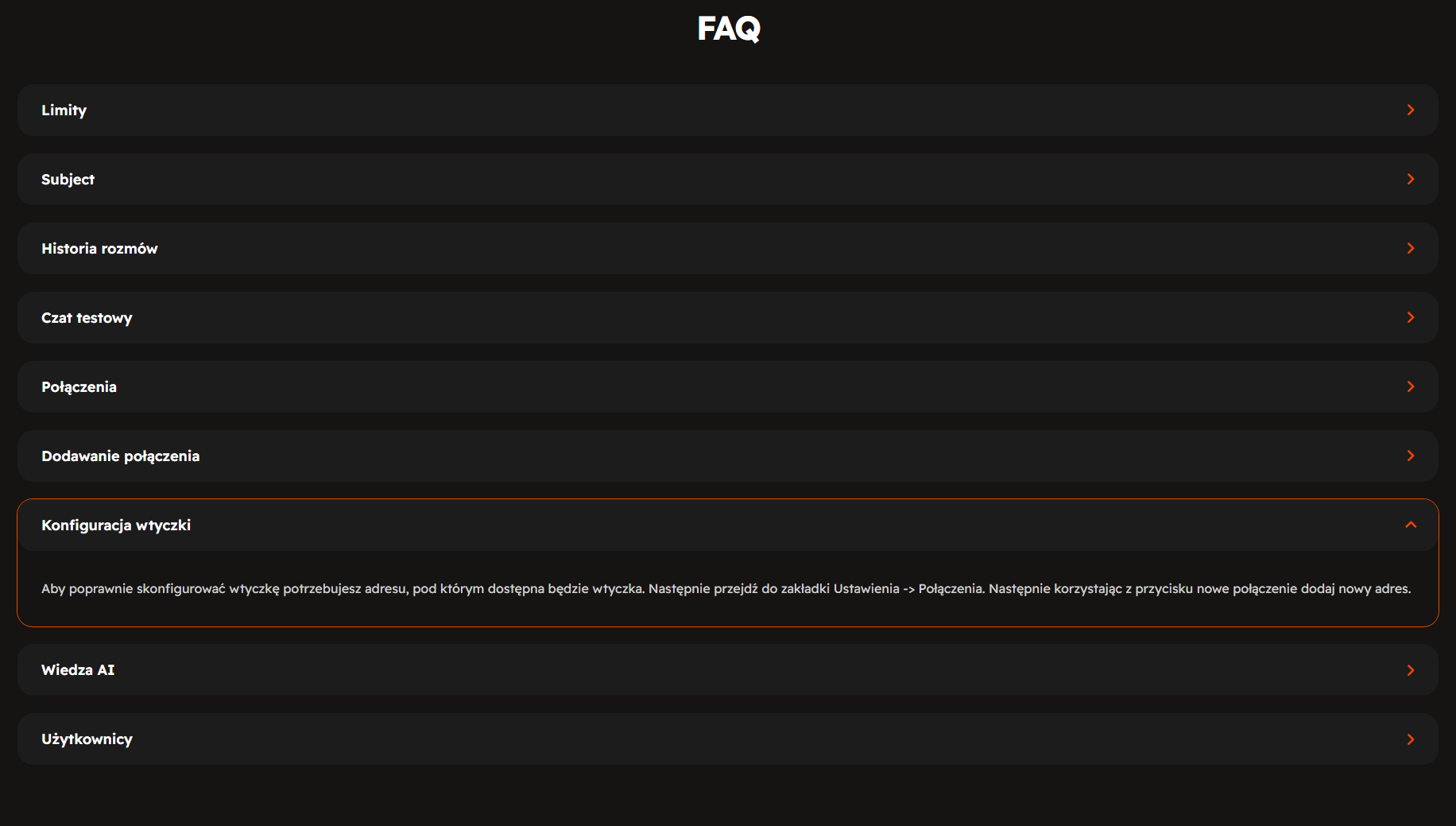BackOffice for Companies for Maja Doc ChatBot AI and Virtual Assistant Maja

Backoffice of the Future: Manage the Power of Artificial Intelligence
Maja Backoffice
Limits
The limits tracking screen is an intuitive tool that allows you to monitor and analyze resource usage in real time. With four interactive charts—current, daily, weekly, and monthly—you gain a comprehensive view of the situation and the ability to respond quickly to changes.

Current Chart
The Current Chart displays the real-time usage of limits. With dynamic updates, you can continuously track how resources are being utilized at any given moment. Colors and markings visually highlight limit breaches, allowing you to quickly identify potential issues.
Daily Chart
The Daily Chart shows limit usage over the past 24 hours. This allows you to analyze daily trends and understand during which hours or days of the week resources are most heavily utilized. This tool helps identify peak periods and facilitates better planning of activities.
Weekly Chart
The Weekly Chart provides a broader context, showing limit usage over the entire week. This allows you to identify recurring patterns, enabling better forecasting of future resource utilization. You can easily compare data from individual days, which facilitates strategic decision-making.
Monthly Chart
The Monthly Chart provides an even broader view, showing long-term trends in limit usage. You can analyze changes over several months, which allows you to draw conclusions about seasonality, cyclicality, and overall business development. This tool will help you better plan future activities and allocate resources in the most efficient way.
The limits tracking screen is a key tool for monitoring and analyzing resource usage. With four charts—current, daily, weekly, and monthly—you gain a comprehensive view of the situation, enabling quick responses to changes and better planning for future activities. This invaluable support in resource management translates into greater efficiency and growth for your organization!
Chat History
The chat history screen is a powerful tool that allows for detailed browsing and analysis of previous conversations conducted by users. With an intuitive interface and advanced filtering features, you can easily access important information.

Chat Filtering
At the top of the screen, there is a filtering panel that allows the user to specify the date range for the chats being searched. Simply select a start and end date to quickly narrow down the results to the desired period. This feature makes it easy to locate specific conversations, which is extremely useful for analyzing user behavior or troubleshooting issues.
Chat List
After applying the filters, the user receives a clear list of chats that includes key information about each conversation:
-
Chat Date: Exact date and time of the conversation.
-
Participant's IP: User's IP address, which can be helpful in identifying location and analyzing website traffic.
-
Browser type: Information about the browser used by the participant, which can provide valuable insights into technology and devices.
Conversation Details
After selecting a specific conversation from the list, the user is taken to the detailed screen, where they can view all messages exchanged in that conversation. With a clear layout, all messages are displayed in chronological order, making it easier to analyze interactions. Users can also see who authored each message and what the responses were, allowing for a comprehensive understanding of the conversation's dynamics.
The chat history screen is an invaluable tool for customer support teams, analysts, and managers. With the ability to filter chats by date and detailed data on each conversation, users can easily understand customer behaviors, analyze trends, and draw conclusions for the future. This functional solution supports better communication and informed decision-making based on concrete data.
Test Chat
The test chat screen is an interactive tool that allows users to experiment with the artificial intelligence's responses to new knowledge. It's an excellent space for testing and verifying how AI responds to different questions and situations, which is particularly useful for developers, analysts, and anyone looking to better understand the system's capabilities.

Interactive Environment
The test chat screen offers a clear interface that allows for easy input of queries to the artificial intelligence. Users can type in questions or statements they want to test, and the system instantly generates responses, enabling real-time observation of how AI processes new knowledge.
Response Analysis.
After entering queries, users can see the responses generated by AI in real time. Each response is presented clearly, allowing for easy comparison of different reactions to the input information. Users can also rate the quality of the responses, enabling ongoing monitoring of the effectiveness of the AI algorithms.
The test chat screen is a key tool for anyone looking to experiment with the capabilities of artificial intelligence. With its interactive interface, option to input new knowledge, and response analysis, users have complete control over the testing process, allowing for a better understanding and development of AI's potential. It's an excellent opportunity to discover how new knowledge impacts responses while also honing interaction skills with the system.
FAQ
The FAQ screen is a key support tool for users, gathering frequently asked questions and detailed descriptions of the system's functionalities. With a clear layout and logical structure, users can quickly find the information they need, making it easier to utilize the software.

Clean Layout
The FAQ screen is designed intuitively, with a division into thematic categories. Users can easily browse the available questions and select those that interest them. Each category contains a list of related questions, which significantly simplifies navigation and allows for quick access to answers on specific topics.
Functionality Description
Within each question, users will find a detailed description of the system's functionality. Practical, easy-to-understand instructions on how to use that functionality are provided. Each step is clearly and comprehensibly explained, allowing users to easily get acquainted with the system.
Tips and Best Practices.
In addition to standard instructions, the FAQ screen includes a section with additional tips and best practices to help users maximize the system's potential. Here, users will find advice on the most effective ways to use features, as well as information on common mistakes that can be easily avoided.
he FAQ screen is an invaluable resource for users who want to fully leverage the system's capabilities. With its clear layout, detailed descriptions of functionalities, and practical instructions, everyone can quickly find the necessary information and learn how to use the software effectively. It’s the perfect learning hub, providing users with confidence and ease as they navigate the system.
Connections
he Connections screen is a key tool in our system, enabling management of the list of authorized connections to the AI API. This functionality gives users full control over which chats can access AI resources, ensuring both security and flexibility in managing interactions.

Approved Connections List
The screen displays a clear list of all approved connections, showing which chats are authorized to use our API. Users can easily browse, sort, and filter this list, making connection management straightforward and efficient.
Adding New Connections
Users can quickly add new chats to the list of authorized connections. This process is intuitive and requires only the necessary information, such as the chat name, description, and other parameters required for authorization. This allows new chats to be integrated with the API swiftly and efficiently.
Editing Existing Connections
The editing functionality allows users to modify the details of existing connections. Users can change parameters such as the chat name, authorization settings, and other important information. This provides the flexibility to customize and update connections as the organization's needs evolve.
Deleting Connections
If necessary, users can delete connections that are no longer needed. This feature is essential for maintaining organization within the system and ensuring that only current and required chats have access to the AI API.
The Connections screen is a crucial component for managing access to the AI API. With the ability to add, edit, and delete chats, users have complete control over connection authorization, ensuring both security and flexibility in managing interactions. This functionality is essential for effectively leveraging AI capabilities within your organization.
Documents
Sekcja Documents are a key element that enables the expansion of your private artificial intelligence's knowledge. By allowing users to upload documents and provide links to websites, they can enrich the AI's database with new, relevant information, which enhances the quality and accuracy of the responses provided.
Main Features of the Documents Section
-
Document upload
Users can easily upload various types of documents, such as PDFs, Word documents, and spreadsheets. This process is simple and intuitive, allowing for quick addition of new knowledge to the system. Each uploaded document is integrated into the AI database, making it a part of its informational resources.
-
Providing Links
In addition to uploading documents, users can add links to websites that contain relevant information. The AI processes these links by analyzing the content of the pages, which allows for dynamic enrichment of knowledge and tailoring responses to the latest information.
-
Impact on AI Responses
Each document and link added directly influences the responses provided by your artificial intelligence. As a result, the AI becomes increasingly precise and tailored to the specific needs of users. You can be confident that your AI is up-to-date with the latest data and knowledge, which enhances the quality of interactions.
-
Document Management
The documents section also offers the ability to manage uploaded files and links. Users can review the history of added documents, edit their status, and delete those that are no longer needed. This helps maintain order within the AI resources and optimizes the knowledge it works with.

The Documents section is a powerful tool that enables users to learn and develop their private artificial intelligence by uploading documents and providing links to websites. This allows your AI to become increasingly precise and tailored to your needs, resulting in higher quality responses and interactions. Enriching your AI's knowledge has never been easier!
Users
The Users section is the central hub for managing user accounts within the system. With advanced search and editing features, administrators can easily monitor and modify user profiles, contributing to effective management of access and permissions.
Main Features of the Users Section
User Search
Users can be quickly searched based on various criteria, such as:
-
Login: Entering a unique login allows for the quick identification of a specific user.
-
Email: The ability to search by email address allows for the immediate location of an account.
-
First and Last Name: Searching by first and last name facilitates the identification of users, especially in larger organizations.

Editing User Profile
Once the appropriate user is located, administrators have the ability to edit their profile. In the editing section, the following can be changed:
-
Basic Information: Such as first name, last name, and email.
-
Password: Allows for resetting or changing the password, which is essential for ensuring account security.
-
Permissions: Administrators can assign different levels of permissions, allowing control over access to various functionalities of the system. This enables the customization of each user’s role according to their tasks within the organization.
Managing Permissions
Assigning permissions is a crucial functionality that enables effective management of access to system resources and features. Administrators can define which options are available to a specific user or group of users, allowing for tailored access according to the organization’s needs.
The Users section is a key tool for administrators, enabling effective management of accounts and permissions within the system. With search and editing features, users can be easily monitored, passwords reset, and appropriate permissions assigned, contributing to security and organization in using the system. This provides invaluable support in managing human resources in your company.
